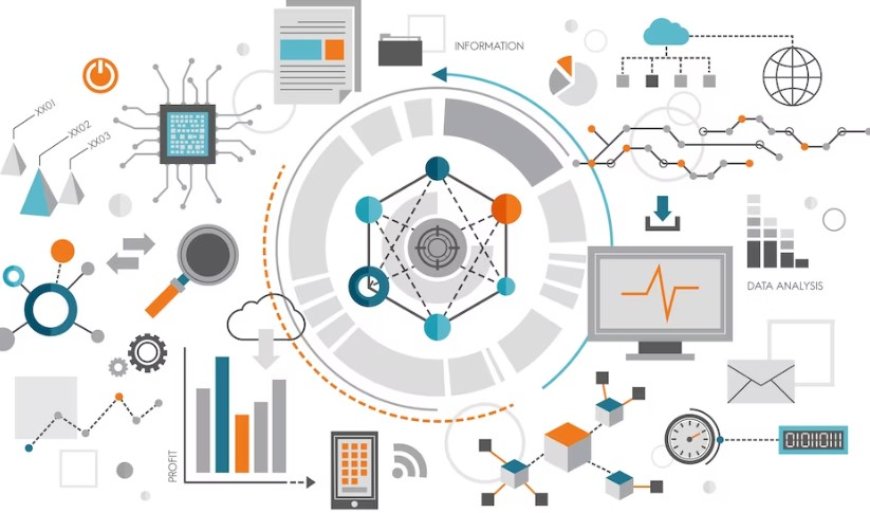Exploring the Data Science Toolbox: Power of Tools
Unlock the future of data science with cutting-edge technologies and tools. Explore the data science toolbox and harness its power for endless possibilities.

Greetings, data enthusiasts! In the ever-evolving world of data science, staying ahead of the curve requires not only a deep understanding of concepts and methodologies but also proficiency in the technologies and tools that power the field. In this friendly blog, we will embark on a journey to explore the vast array of technologies and tools that empower data scientists to extract valuable insights from data. From programming languages and data visualization tools to machine learning frameworks and big data technologies, we will uncover the key components of the data science toolbox. So, buckle up and get ready to unleash the power of data science technologies and tools!
Programming Languages: Versatility and Flexibility
At the heart of data science lies programming languages, enabling data scientists to transform raw data into actionable insights. Python, with its simplicity and extensive libraries such as NumPy, Pandas, and Scikit-learn, has become the go-to language for data scientists. Its versatility and flexibility allow for efficient data manipulation, statistical analysis, and machine learning model development. R, another popular language in data science, provides powerful statistical capabilities and a vast ecosystem of packages. Additionally, languages like Julia and Scala have gained traction in the data science community for their speed and compatibility with big data frameworks. Mastery of at least one programming language is essential for data scientists to manipulate, analyze, and visualize data effectively.
Data Visualization Tools: Insights at a Glance
Data visualization is a critical aspect of data science, enabling data scientists to communicate insights and patterns effectively. Tools like Tableau, Power BI, and QlikView offer interactive dashboards and visualizations, making it easier to present complex data in a visually appealing and understandable manner. These tools allow users to create dynamic charts, graphs, and maps, facilitating data exploration and storytelling. Python libraries like Matplotlib, Seaborn, and Plotly offer versatile options for creating custom visualizations within coding environments. A combination of programming languages and data visualization tools empowers data scientists to uncover hidden patterns, trends, and correlations in data and convey them to stakeholders with clarity.
Machine Learning Frameworks: Unleashing the Power of Prediction
Machine learning lies at the core of data science, enabling the creation of predictive models and extracting insights from data. Frameworks like TensorFlow and PyTorch provide a powerful set of tools for building and training machine learning models. These frameworks offer a wide range of algorithms and neural network architectures, enabling data scientists to tackle tasks such as image recognition, natural language processing, and recommendation systems. Scikit-learn, a popular machine learning library in Python, provides a user-friendly interface for implementing a variety of algorithms and performing tasks like classification, regression, and clustering. Proficiency in machine learning frameworks empowers data scientists to leverage the power of algorithms and extract valuable insights from data.
Big Data Technologies: Taming the Data Deluge
In an era of exponential data growth, big data technologies have emerged as a crucial component of the data science toolbox. Apache Hadoop, an open-source framework, allows for distributed processing and storage of large datasets across clusters of computers. It provides scalability and fault tolerance, enabling data scientists to process vast amounts of data efficiently. Apache Spark, another widely adopted big data framework, offers fast in-memory processing and supports various data formats and programming languages. It simplifies complex data operations like data streaming, machine learning, and graph processing. Understanding big data technologies equips data scientists to handle massive datasets, perform distributed computations, and derive meaningful insights from the data deluge.
Cloud Computing Platforms: Scaling Data Science
Cloud computing has revolutionized the data science landscape, offering scalable computing power and storage resources on-demand. Platforms like Amazon Web Services (AWS), Microsoft Azure, and Google Cloud Platform provide a wide range of services specifically tailored for data science. These platforms offer scalable infrastructure, data storage options, and managed services for machine learning and analytics. By leveraging cloud computing, data scientists can scale their computational resources as needed, reducing infrastructure costs and enabling faster processing of large datasets. Familiarity with cloud computing platforms empowers data scientists to harness the potential of distributed computing, parallel processing, and elastic scalability.
Integrated Development Environments (IDEs): Streamlining Data Science Workflows
Integrated Development Environments (IDEs) serve as productivity hubs for data scientists, providing a unified interface for coding, debugging, and collaborating on data science projects. Tools like Jupyter Notebook, Spyder, and RStudio offer interactive coding environments that combine code, visualizations, and documentation in a single platform. These IDEs facilitate data exploration, experimentation, and rapid prototyping. Additionally, version control systems like Git enable efficient collaboration and code management, allowing multiple data scientists to work on the same project seamlessly. Embracing IDEs and version control systems streamlines data science workflows, enhances productivity, and fosters collaboration among team members.
Data Wrangling and Cleaning Tools: Taming the Data Beast
Data scientists often spend a significant amount of time wrangling and cleaning data to ensure its quality and usability. Fortunately, there are several tools available to streamline these tasks. Pandas, a popular Python library, provides efficient data manipulation and cleaning capabilities, allowing data scientists to handle missing values, outliers, and inconsistent data. OpenRefine is another powerful tool that helps in cleaning and transforming messy data by automating tasks like data standardization, deduplication, and text parsing. These data wrangling tools enable data scientists to prepare data for analysis and modeling, saving valuable time and ensuring data accuracy.
Lets take everything into consideration, the vibrant landscape of data science technologies and tools! From programming languages to data visualization tools, machine learning frameworks, big data technologies, cloud computing platforms, and IDEs, each component plays a unique role in empowering data scientists to extract valuable insights from data. As you embark on your data science journey, embrace the power of these technologies and tools. Continuously expand your knowledge, experiment with different options, and stay updated with the latest advancements. Remember, the data science toolbox is ever-evolving, and your adaptability and curiosity will be your key allies. So, dive into the world of data science technologies and tools, and let them empower you to unravel the mysteries hidden within data. Happy data exploring!


























































